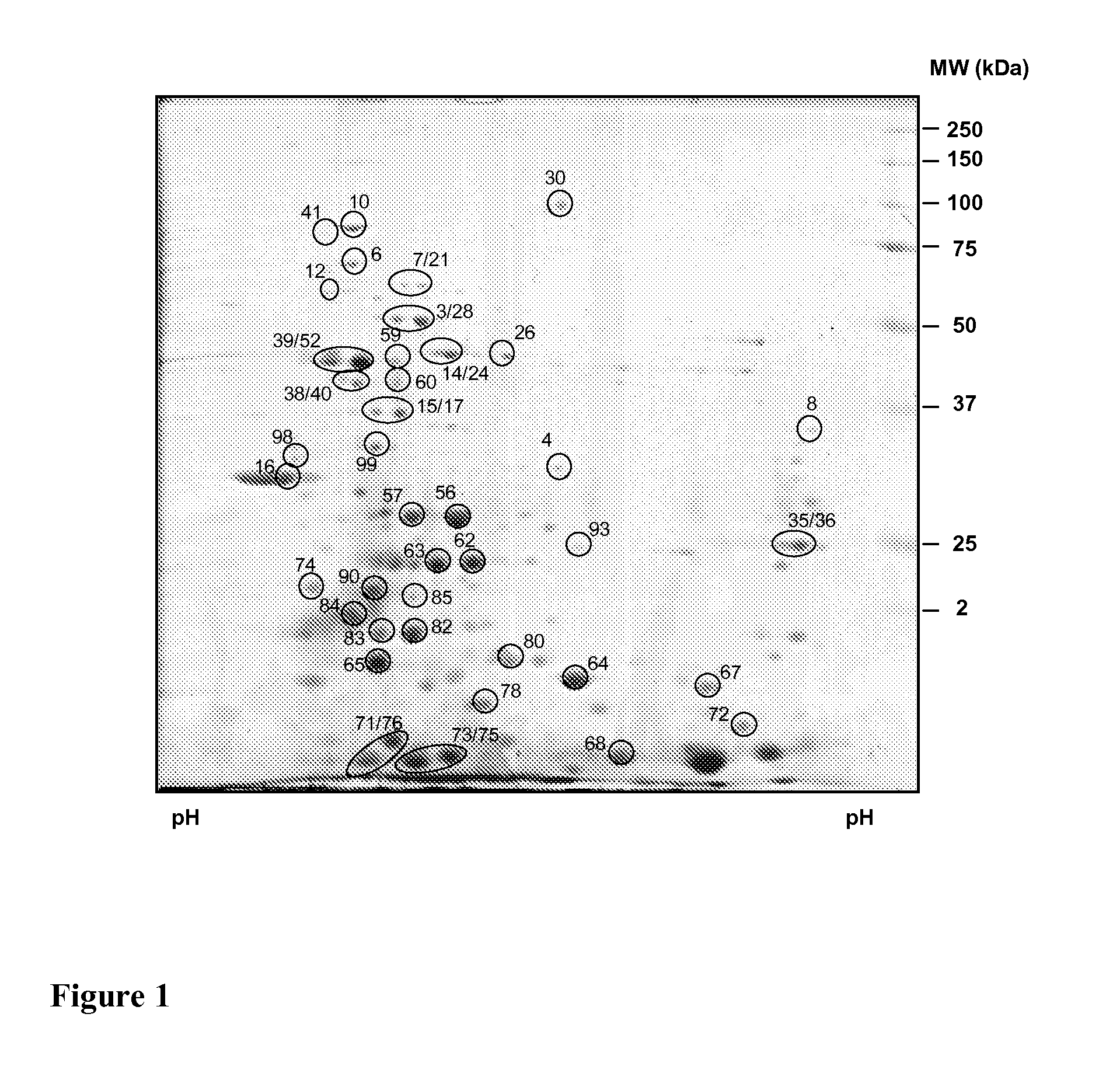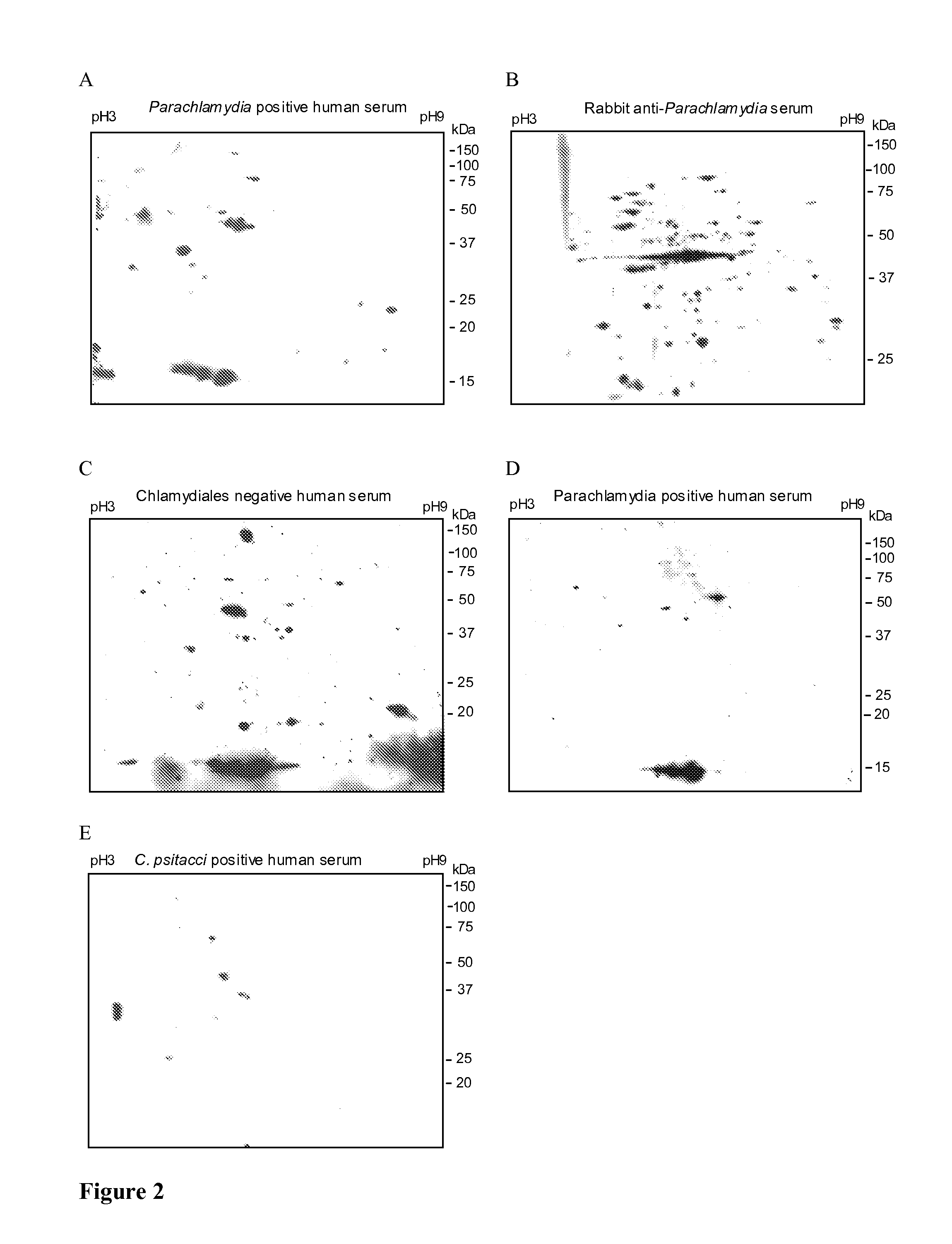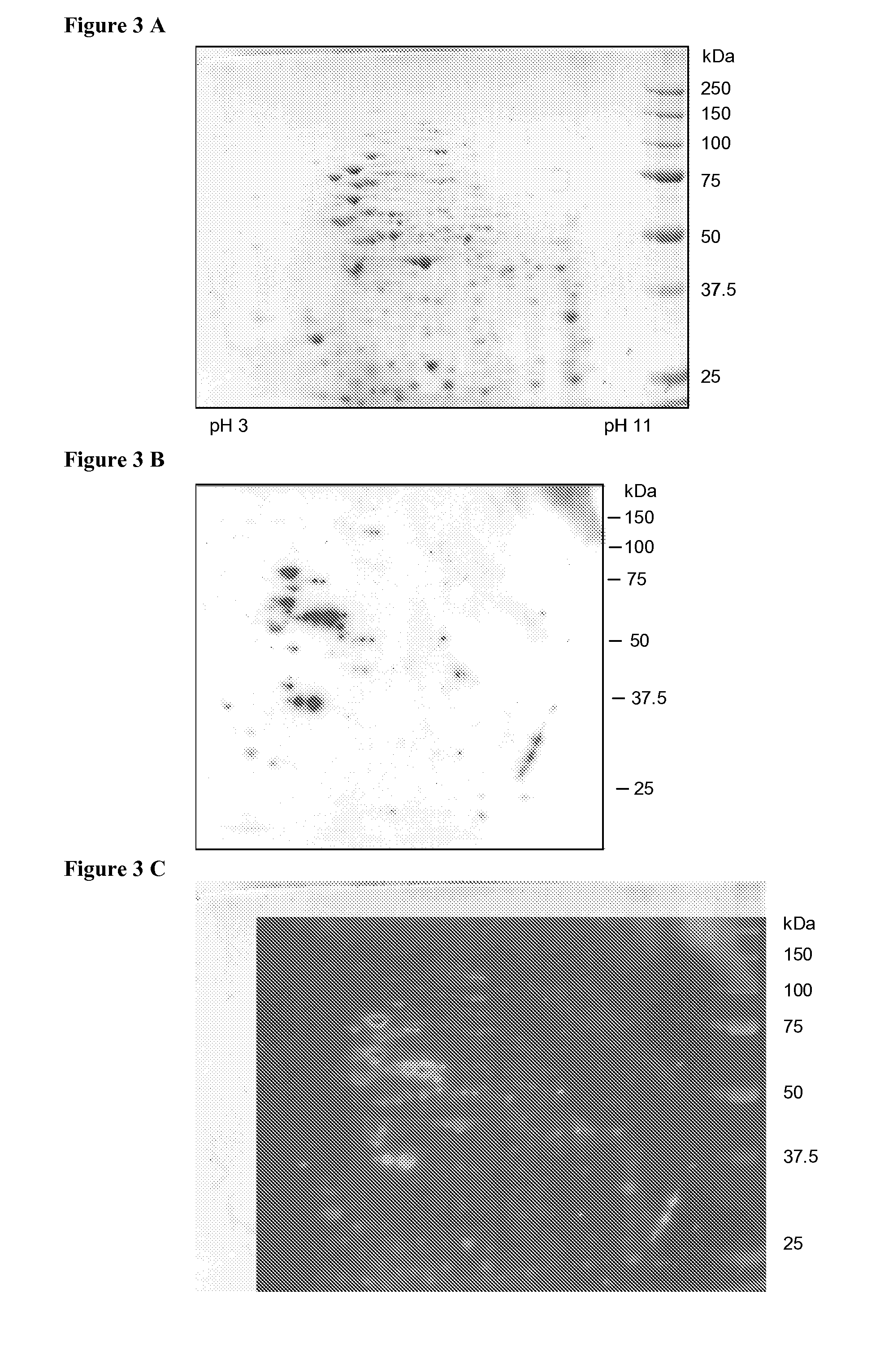Antigenic polypeptides of chlamydia-related bacteria for diagnosis and vaccine
a technology of chlamydia-related bacteria and antigen polypeptides, which is applied in the field of immunology, can solve the problems of preventing the use of replicative niches, preventing the infection of parachlamydia-related macrophages only partially, and well be underestimated, so as to avoid false positives
- Summary
- Abstract
- Description
- Claims
- Application Information
AI Technical Summary
Benefits of technology
Problems solved by technology
Method used
Image
Examples
example 1
Cultivation and Purification of Parachlamydia acanthamoebae
[0120]A procedure for purifying P. acanthamoebae is described by G. Greub, J.-L. Mege and D. Raoult “Parachlamydia acanthamoebae Enters and Multiplies within Human Macrophages and Induces Their Apoptosis”, Infection and Immunity, October 2003, p. 5979-5985, more particularly on page 5979 under the title “Materials and methods” the paragraph “P. acanthamoebae culture and purification”. This procedure was used with the exception that instead of A. polyphaga, the A. castelanii strain ATCC 30010 was used as a host. Furthermore, there was no tittering, lysis test and freezing conducted. Instead, the large lower band of Parachlamydia resuspended twice in PBS was subjected to 2D gel electrophoresis as reported below.
example 2
Crude Extract Sample Preparation and 2-D Gel Electrophoresis
[0121]Purified bacteria (mostly elementary bodies, EB) were washed twice in 10 mM Tris, 5 mM MgAc, pH 8.0 and then lysed by 5 cycles of short-pulse sonication in lysis buffer (30 mM Tris, 7M urea, 2M Thiourea, 4% CHAPS, pH 8.5). Proteins were recovered by centrifugation at 8′0000 rpm and quantified using a Bradford assay (Quick Start™ Bradford Protein Assay, Bio-Rad laboratories, Hercules, USA). Routinely about 4 mg of total parachlamydial proteins were obtained from 60 T75 flasks of amoebal co-culture. Aliquots of 1.2 mg were stored at minus 80° C. for subsequent electrophoretic analysis.
[0122]Two dimensional gel electrophoresis was performed as described by Centeno et al (Centeno et al., Cell Death and Differentiation, 2007, 14, p. 240-253) using approximately 150 μg (mini gels) or 600 μg (midi-gels) of total EB proteins for each electrophoretic run. Proteins were visualized by Coomassie Blue staining or transferred to ni...
example 3
Immunoblot Analysis
[0123]Nitrocellulose membranes were blocked by 2 hours incubation with 5% non-fat dry-milk in Tris-buffered saline with 0.05% Tween 20 (TBS), washed 3 times with TBS, 0.5% milk and incubated overnight at 4° C. with sera diluted in TBS, 0.5% milk. Membranes were probed either with human sera (see “Patients” above (dilution 1 / 64) or with sera (dilution 1 / 25) of rabbits immunized 4 times with purified and heat-inactivated bacteria (Eurogentec standard protocol). After 3 subsequent washes with TBS, 0.5% milk, the membranes were probed with horseradish peroxidase-conjugated goat anti-human IgG (Chemicon, Temecula, Calif., 1:5000), or anti-rabbit IgG (Cell Signaling, Allschwill, Switzerland, 1:1000). Membranes were then washed 3 more times with TBS and immunoreactive spots were detected with a chemiluminescence-based kit (LiteAblot™, Euroclone SpA, Pero, Italy).
[0124]FIG. 2 shows the result of immunoblot analysis obtained with sera as indicated. Serum of a patient negat...
PUM
| Property | Measurement | Unit |
|---|---|---|
| Fraction | aaaaa | aaaaa |
| Composition | aaaaa | aaaaa |
| Immunogenicity | aaaaa | aaaaa |
Abstract
Description
Claims
Application Information
 Login to View More
Login to View More - R&D
- Intellectual Property
- Life Sciences
- Materials
- Tech Scout
- Unparalleled Data Quality
- Higher Quality Content
- 60% Fewer Hallucinations
Browse by: Latest US Patents, China's latest patents, Technical Efficacy Thesaurus, Application Domain, Technology Topic, Popular Technical Reports.
© 2025 PatSnap. All rights reserved.Legal|Privacy policy|Modern Slavery Act Transparency Statement|Sitemap|About US| Contact US: help@patsnap.com



